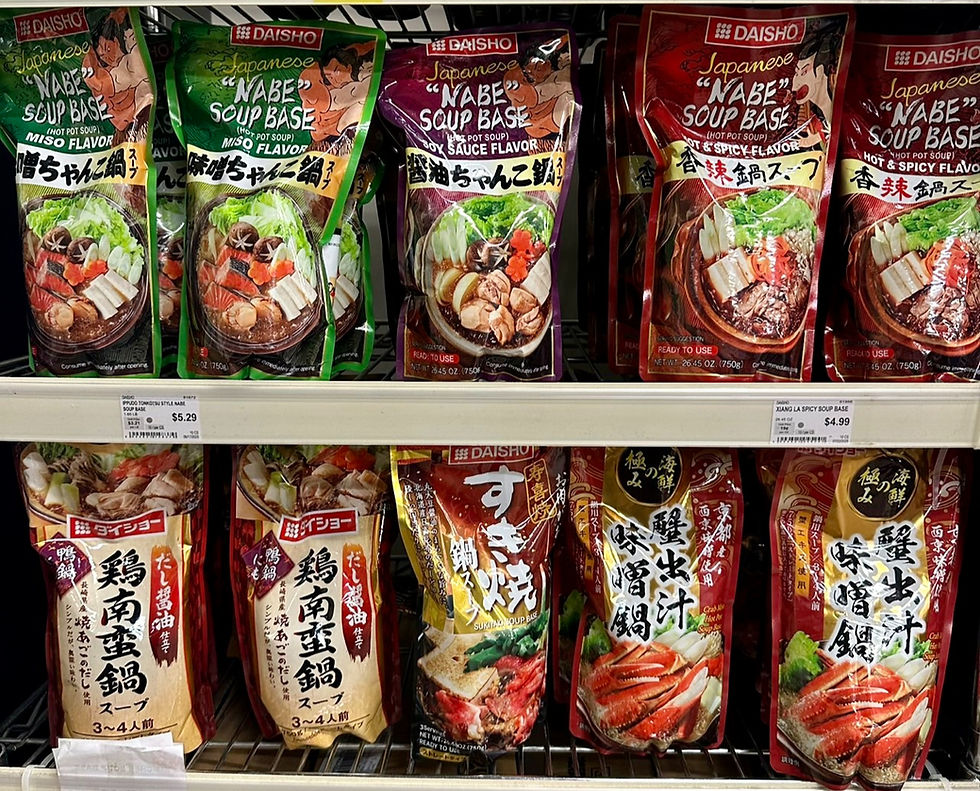The New Year is Coming, and so are Osechi!
- Spratty Lin
- Oct 28, 2019
- 3 min read
Updated: Nov 9, 2024

As the New Year approaches, so does the return of Maido’s osechi ryori! Oeschi ryori, or osechi for short, consists of a special box (called jubako) filled with ceremonial auspicious foods whose consumption is thought to usher in good fortune for the new year. Osechi have a long history in Japan, reaching back about 1000 years to the Heian Period. In those days, it was considered taboo to cook during the first three days of the New Year. Osechi were made a few days in advance, specifically of foods that could be eaten at room temperature and that would keep for a while without needing refrigeration. Osechi dishes are usually simmered or boiled with soy sauce, sugar and mirin, giving them a strong salty, savory or sweet taste depending on the exact proportions used. In the olden days, salt, vinegar and sugar used would help keep osechi fresh until the first three days of the New Year were over and households could begin cooking again. While the number and types of dishes included in osechi has expanded significantly and modern technology does not limit us in terms of shelf-life, the imprint of the need for preservation lives on the flavor and preparation style of osechi.
Each dish in the osechi is considered to have an auspicious meaning connected to financial success, hard work, bountiful harvests, scholarly pursuits, family growth, or life into old age. Modern osechi usually consist of some, if not all of the following dishes:
Kuromame, or black soy beans, which are associated with being able to work hard in the upcoming year.
Kazunoko, or herring roe, which is believed to be a blessing for a large family or many children in the future.
Tazukuri, or boiled anchovies. Historically, this type of fish was used as fertilizer for rice paddies, and as a result are associated with bringing in a bountiful harvest.
Kohaku Kamaboko, or red and white fish cake. Red and white are colors traditionally associated with good luck in Japan, so eating red and white fish cake is thought to usher in good luck for the new year.
Datemaki, a rolled omelet similar to tamagoyaki, but made with fish paste. It is fluffy and light and thought to bring success to scholarly endeavors.
Kurikinton, a dish made of sweetened, mashed chestnuts that is a deep gold in color. The color is associated with money and eating it is thought to usher in financial stability to the new year.
Kobumaki, a rolled, sweetened piece of kombu seaweed thought to bring joy.
Kohaku namasu, a salad made from shredded daikon radish and carrot steeped in vinegar. It’s orange and white color is associated with good luck in the upcoming year.
Nishime, or simmered root vegetables. Eating these vegetables is thought to bring along a future with fewer, or at least more avoidable, obstacles.
Shrimp, whose long, stooped shape and whiskers are associated with the stooping posture and long beard of an elderly person, is eaten with the intention of ushering in a long life.
While the general contents of osechi are held in tradition, new dishes are being added as tastes change and old dishes are being dropped as they fall out of favor. Some new dishes that have been begun to be included in recent years are roast beef, teriyaki chicken, grilled scallops, and smoked salmon. While some families keep with tradition by making their own osechi, it is becoming increasingly common to purchase pre-made osechi from specialty shops or grocery stores (or a convenience store like 7-11 if you’re in Japan). No matter if osechi are homemade or purchased, they are all certainly best eaten on New Year’s day in the company of family, so that all the brightest things that the new year can offer will be welcomed in.




Comments